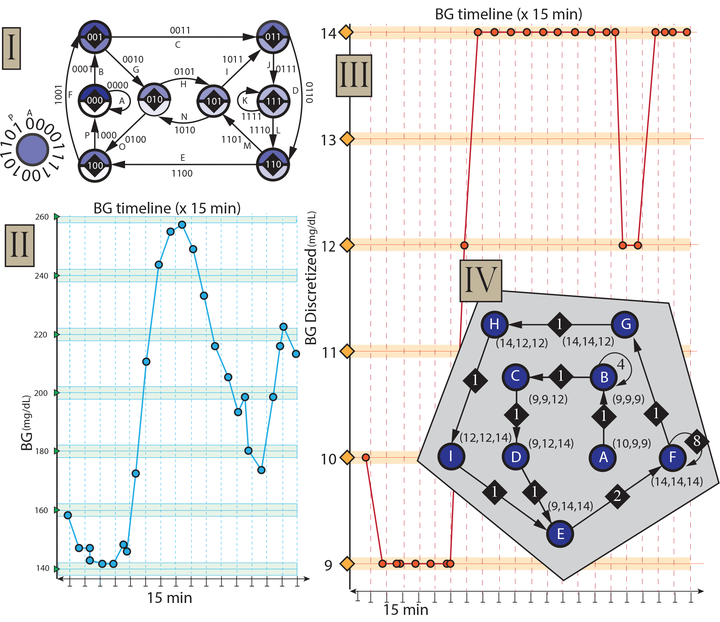Pediatric Hypoglycemia Forecasting

Pediatric diabetes I is an endemic and an especially difficult disease; indeed, at this point, there does not exist a cure, but only careful management that relies on anticipating hypoglycemia. The changing physiology of children producing unique blood glucose signatures, coupled with inconsistent activities, e.g., playing, eating, napping, makes “forecasting” elusive. While work has been done for adult diabetes I, this does not successfully translate for children. In the work presented here, we adopt a reinforcement approach by leveraging the de Bruijn graph that has had success in detecting patterns in sequences of symbols–most notably, genomics and proteomics. We translate a continuous signal of blood glucose levels into an alphabet that then can be used to build a de Bruijn, with some extensions, to determine blood glucose states. The graph allows us to “tune” its efficacy by computationally ignoring edges that provide either no information or are not related to entering a hypoglycemic episode. We can then use paths in the graph to anticipate hypoglycemia in advance of about 30 minutes sufficient for a clinical setting and additionally find actionable rules that accurate and effective.